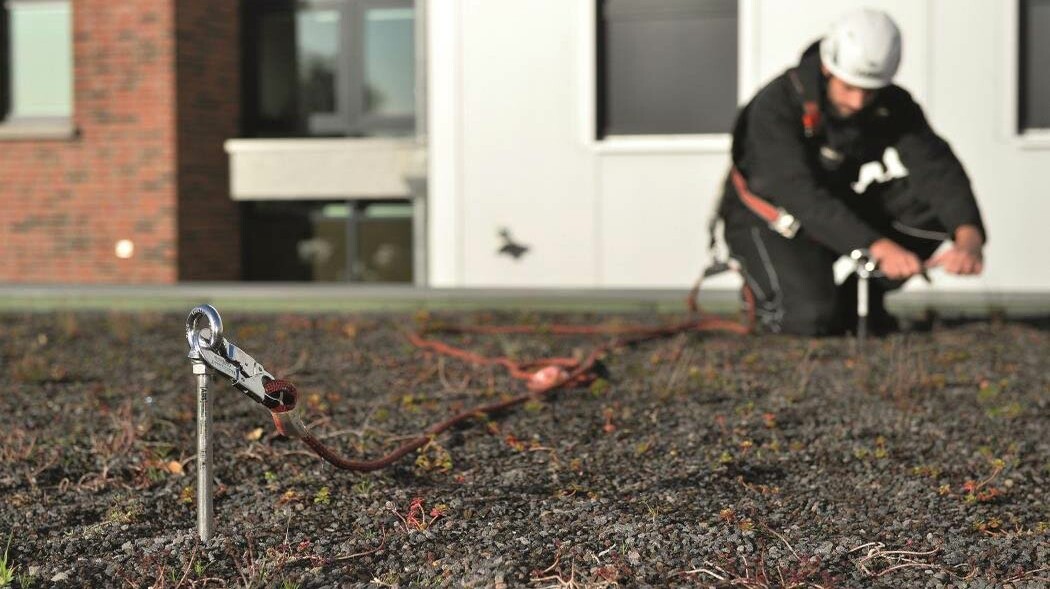PPE
Rope-up protection
The term rope-up protection describes a special form of fall protection using personal fall protection equipment (PPE). This type of safety system is based on a connector which employees from a broad range of professions who work at heights can use to hook themselves up. A connector can prevent these individuals from falling or arrest their fall should they slip. One end of this connector is connected to a so-called anchorage device (AD). The other end is attached to a safety harness worn by the user.
Basic requirements for using rope-up protection
Using rope-up protection is a safety measure that should only be used temporarily and/or for work that does not take long. If areas high up are accessed frequently by your workers, you should check whether you should really be giving preference to a collective protection system.
Rope-up protection requires an anchorage device. This may take the shape of a single anchorage point, roof safety hook, lifeline system or a rail safety system. Only products that have been demonstrably tested and accordingly certified may be used.
What to watch out for when using a rope-up fall protection solution
There are various things to watch out for when working with PPE equipment and rope-up protection solutions. First of all, only those individuals may use rope-up protection and PPE equipment that have received appropriate instruction. The main object of using such equipment is to prevent a swing fallwherever possible. The risk of a swing fall is particularly high where individual attachment points are used for securing purposes and the secured individuals are not working in the direction of fall, i.e. towards the anchorage device, but, due to the arrangement of the individual attachment points, at an angle to the anchor.
In addition, users working with PPE equipment should take care to ensure that they only use sharp edge-tested connectors. These are capable of withstanding a fall - even when the retaining cable is stretched over a (roof) edge or (in the case of a swing fall) where this cable is scraped backwards and forwards along the edge.
Two different solutions: An arresting or a retention system?
When roping up using PPE equipment, a differentiation is made between two basic safety solutions. When used as a retention system , the connector restricts the user’s working radius to such an extent that he/she can still reach his/her place of work but cannot accidentally step out over the falling edge. The aim of such measures is to prevent falls.
In the case of an arresting system, which is used where it is impossible to install a retention system, the main task of the system is to arrest falls as safely as possible. A connector needs to be adjusted to the correct length to stop a free fall which could otherwise result in death caused by hitting the ground. A lanyard energy absorber also reduces the force exerted on the body to a maximum of 6 kN. If a person has fallen and his/her fall successfully arrested, this person must be rescued as soon as possible.

